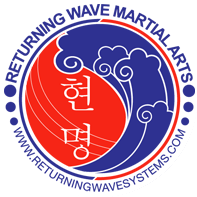by Richard Conceicao
Much of what is practiced in karate stances and methodology today is a misunderstanding of what was presented in the past for teaching or conditioning purposes to the student. What are presented now was not the original concern i.e. fighting applications. Things have been changed for instructional (didactic) or, as stated before, aesthetic purposes.
This causes great confusion in modern times. It sometimes becomes very difficult to tease out what is being presented to you for the purposes of training your body to increase its strength or flexibility, or training your mind so that you know what enhanced stability, or weight shifting forward or backward feels like.
Funakoshi sensei explicitly states this; “wide stances are for novices, normal stances are for experts”. This is a phrase that is too often forgotten these days, especially in form competition.
If one looks at most form competition in tournaments today, there are two types of competitors that win. The first one does a “classical” form with wide, deep stances, and careful attention to the timing, rhythm, and “perfect shape” of each position.
The second kind of competitor performs a form of his own creation, possibly with musical accompaniment, that demonstrates both great flexibility and athleticism. It is usually dramatic and exciting to watch, but unfortunately, completely devoid of any martial application whatsoever
This is unfortunate, as the individual performing it may demonstrate great artistry; this is not a fighting art. When the performer is asked about this, in other words, what you do? He is either making his applications fit his form (if he has thought it through that far), or he has no idea.
It appears that this has become more and more commonplace as time goes on. As martial arts gain more and more acceptance within the community at large, I fear that we will see an increase in this type of approach.
Yet, when the prospective student tries to figure out why he can’t make his form show him anything that appears to be of any use in actual combat, we have to look at the above concerns.
Some examples to illustrate these points:
1. Many Chinese and other styles have this prospective student standing on horseback stance for extremely long periods of time. Are they trying to have the student develop good posture? or perhaps enhance his leg strength and flexibility? Or do we honestly believe that they expect the student to consistently fight in the stance.
2. Many Shotokan practitioners practice long, deep, firm stances. When they move across the floor they take very large steps, including when they switch among different stances, such as going from front stance to back stance to horseback stance and back to front stance.
Is this to teach stability, to increase leg strength and flexibility, or are we to believe they honestly expect people to fight this way. Actually, sensei Funakoshi has already provided us with the answer above. No they don’t. But many people behave as if they believe it.
3. ITF — TKD practitioners use a sine wave motion when moving forward and backward. When asked why, they will comfortably state that this is to develop power in the attacking technique. This is of course quite true. Unfortunately most apply the attack too late (i.e. after the weight has completely settled) for the power to be propagated correctly.
4. Many styles make their knife hand blocks from a chambering position very far back with the hands sweeping forward. Not to pick on a particular style, as a matter of fact, all “chambering positions” are not what they seem to be. In actual combat situations no one has the time to pull back to “chamber” in order to strike forward. Once again we have a technique that has become misunderstood in modern times.
So now in our current situation, in order to tease out the actual martial applications we have to take a look at what we take for granted. If we practice something, we must ask ourselves some basic questions:
1. What is this technique supposed to do?
2. How does it do it?
3. How do I train it?
Obviously we must begin with a proper understanding of the basic purpose of the technique we are practicing. This could be considered the hard part, primarily because many of these have been hidden from us or given incorrect names. In any event, whatever we conceive of it to be, we must practice it with that in mind. Anything else is a waste of time.
Once we have an understanding, or, the very least, one particular application in mind, we begin the process of “making the large small”.
All movements as they are being learned have to not only be broken down into their component parts, but they have to be performed in very large motions. This is so that each part can be fully understood and executed properly. It is a very natural way of learning. As proficiency is gained the motions can become smaller and smaller. Eventually they reach a point where they are essentially invisible, even to the trained eye.
This, of course, is exactly the opposite of what most people see, especially on television or the movies. In these cases the actors are making the movements so large that they can be seen from the balcony. Many times the fights are done in slow motion –to make sure the unsophisticated audience appreciates the skills of the stuntman.
As Bruce Lee once pointed out, “you must hack away at what is unessential”. It is the job of the student to relentlessly improve on the efficiency of his technique. What once took five steps to complete should be whittled down to three, than to two, and finally down to just one.
To accomplish this goal takes not only practice, but purposeful practice. One has to be open to variations in timing, angle, and intent in order to gain understanding.
